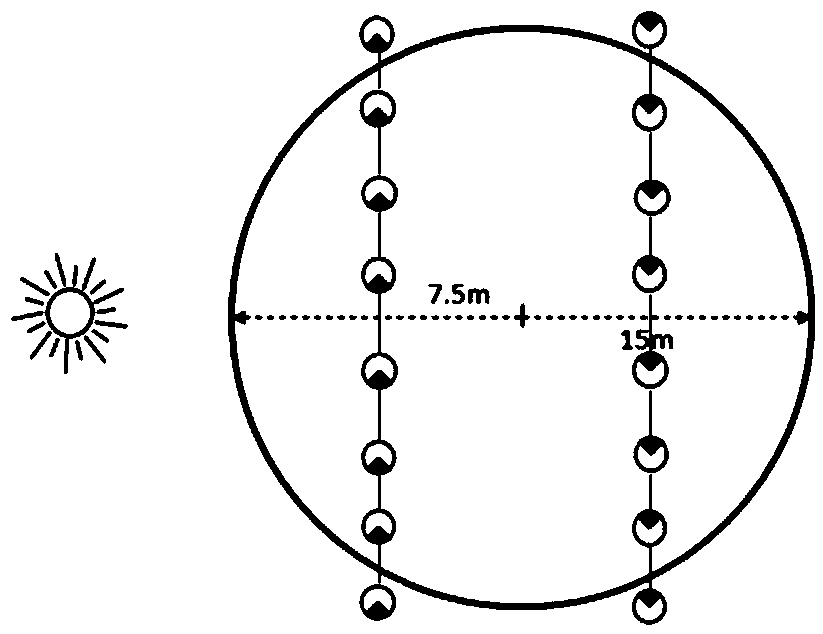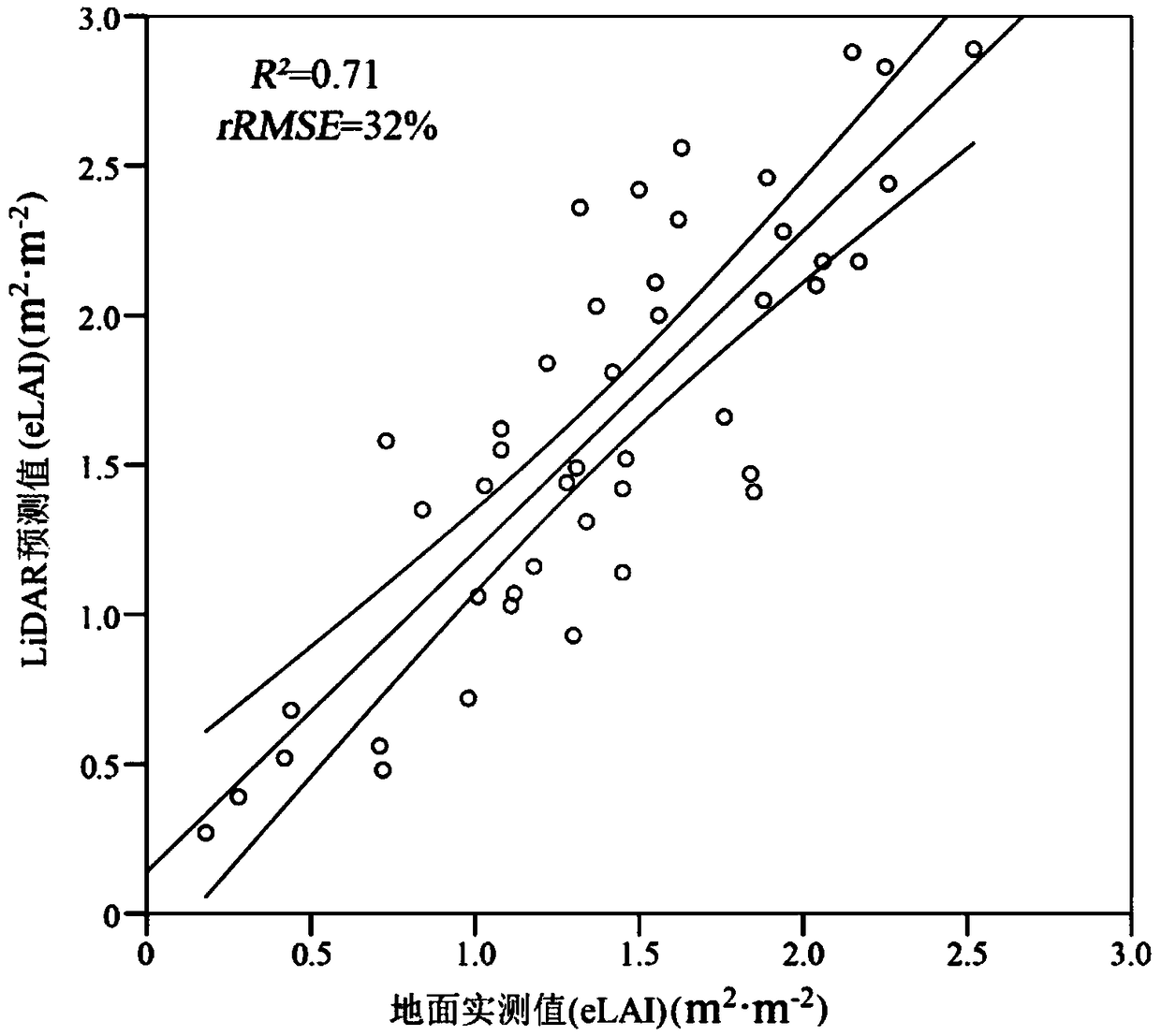A method for estimating leaf area index of Ginkgo biloba plantation based on UAV lidar porosity model
A technology of leaf area index and laser radar, which is applied in the direction of radio wave measurement system, measurement device, image data processing, etc., can solve the problem of no acquisition, achieve the effect of enhanced ability and precision, low cost, and easy method transplantation
- Summary
- Abstract
- Description
- Claims
- Application Information
AI Technical Summary
Problems solved by technology
Method used
Image
Examples
Embodiment 1
[0027] A method for estimating the leaf area index of ginkgo plantations based on the UAV lidar porosity model, the steps are as follows:
[0028] 1) Collect lidar point cloud data with the help of multi-rotor drones. Set up 45 circular plots within the test area, each with a diameter of 30m. The coordinates of the center point of the sample plot were measured using GPS (Trimble GeoXH6000), which positioned by receiving wide-area differential signals, with an accuracy better than 0.5m. And the leaf area index (eLAI) was measured by LAI-2200 in the sample plot. The measurement method is as follows:
[0029] Such as figure 1 As shown, two 30m measuring lines are selected in the direction perpendicular to the sunlight, and the midpoints of the two measuring lines are 7.5m away from the center of the circle respectively. In order to exclude the influence of ground cover, the LAI-2200 is placed at a position 1m above the ground for measurement. First, match the two probe rods ...
PUM
 Login to View More
Login to View More Abstract
Description
Claims
Application Information
 Login to View More
Login to View More - R&D
- Intellectual Property
- Life Sciences
- Materials
- Tech Scout
- Unparalleled Data Quality
- Higher Quality Content
- 60% Fewer Hallucinations
Browse by: Latest US Patents, China's latest patents, Technical Efficacy Thesaurus, Application Domain, Technology Topic, Popular Technical Reports.
© 2025 PatSnap. All rights reserved.Legal|Privacy policy|Modern Slavery Act Transparency Statement|Sitemap|About US| Contact US: help@patsnap.com



